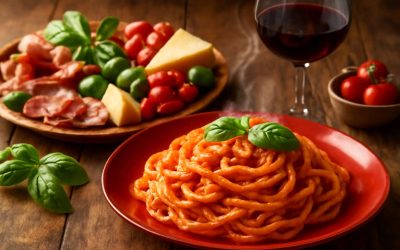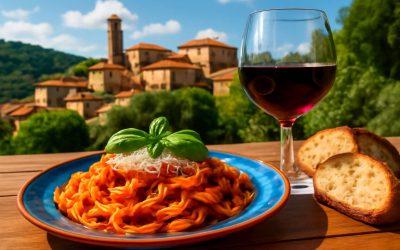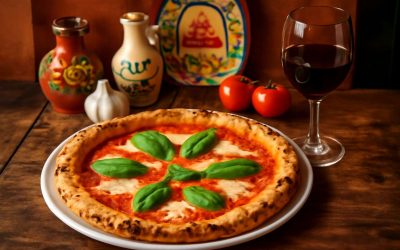Italian food is one of the world’s most popular cuisines, with a long list of classic dishes, delicious cured meats and cheeses and amazing crusty loaves of bread. It also features some of the most delicious desserts that can be imagined: cannoli, polpettone, sfogliatelle and more.
Italian cuisine is a mix of Mediterranean influences and European traditions. The ingredients used in Italian cooking are fresh, simple, and incredibly flavorful.
Tomatoes and basil are two of the most important ingredients in Italian cuisine. They are often pureed into a sauce or topped onto pasta and pizza, and many dishes are seasoned with a variety of herbs and spices.
Olive oil is a crucial ingredient in Italian cooking, both for cooking and for salad dressings. It can be used for frying, baking, and cooking vegetables, but it is especially great for drizzling over pasta.
A number of different types of cheese are also a major ingredient in Italian cooking, including mozzarella, parmesan and ricotta. These are the cheeses that are most associated with Italy, but Italians also enjoy a wide variety of other types of cheese.
Authenticity is a key aspect of Italian cuisine, so the country has taken steps to ensure that its foods are both safe and legitimate. The GI, or Guaranteed Identity, system guarantees that products have been grown, raised and produced in Italy.
Every protected product in the GI system is traced and tracked by DNA tests, ensuring that it came from a legitimate source. This helps to maintain marketplace clarity and prevents counterfeiting of some of the most valuable Italian products, such as olive oil, wine, balsamic vinegar, and cheese.
Locally produced products are often a big part of Italian cooking, and regional dishes are highly popular. Specialties include cioppino (a seafood stew similar to bouillabaisse) and baccala (dried cod).
The cuisine of Italy is also influenced by its history, with some dishes dating back centuries. For example, sfogliatelle was invented in the Renaissance period and is now a staple of Italian cuisine.
Another culinary influence is its emphasis on using only the finest ingredients in the dishes it creates. It’s hard to find a dish in Italy that does not feature fresh herbs, particularly oregano and basil.
Italians love to use a variety of spices in their dishes, and they usually season everything from fish to potatoes to meat with a combination of salt, pepper, basil, thyme, rosemary, and other herbs.
Some dishes are even flavored with wine. A typical meal begins with a starter, or primo course, and then continues with a main course, or secondo course. This is followed by a dessert, or terrine, and then ends with a coffee or cappuccino, which are very popular in the region of Florence.
The Italian diet is extremely varied and contains a lot of protein and dairy, as well as a healthy dose of fresh fruits and vegetables. In the summer, Italians enjoy beetroot, beans, cucumbers and tomatoes, while in the winter they have heartier fare such as broccoli, artichokes and cabbage.



0 Comments